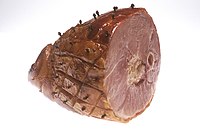
Evaluation of the physicochemical, biochemical and microbiological characteristics of three Serbian traditional dry-fermented sausages
Sign Up to like & getrecommendations! Published in 2020 at "Journal of Food Science and Technology"
DOI: 10.1007/s13197-020-04825-4
Abstract: Three Serbian traditional dry-fermented sausages, Sremski kulen (S), Lemeški kulen (L) and Petrovačka kobasica (P), were compared for physicochemical, biochemical and microbiological properties, in order to provide complex overview of their quality and safety. The… read more here.
Keywords: fermented sausages; physicochemical biochemical; three serbian; traditional dry ... See more keywords

The potential correlation between bacterial diversity and the characteristic volatile flavour of traditional dry sausages from Northeast China.
Sign Up to like & getrecommendations! Published in 2020 at "Food microbiology"
DOI: 10.1016/j.fm.2020.103505
Abstract: The objective of this study was to explore the correlation between bacterial communities and volatile compounds in traditional dry sausages from different regions in Northeast China. The bacterial community structure of dry sausages from five… read more here.
Keywords: dry sausages; traditional dry; correlation; correlation bacterial ... See more keywords

Effect of a Selected Protective Culture of Lactilactobacillus sakei on the Evolution of Volatile Compounds and on the Final Sensorial Characteristics of Traditional Dry-Cured Fermented “Salchichón”
Sign Up to like & getrecommendations! Published in 2023 at "Biology"
DOI: 10.3390/biology12010088
Abstract: Simple Summary The use of lactic acid bacteria as starter culture in the production of traditional dry-cured fermented sausages is not widespread due to the possible undesirable effects of these bacteria on the sensory quality… read more here.
Keywords: culture; lactilactobacillus sakei; volatile compounds; dry cured ... See more keywords

The Occurrence of Five Unregulated Mycotoxins Most Important for Traditional Dry-Cured Meat Products
Sign Up to like & getrecommendations! Published in 2022 at "Toxins"
DOI: 10.3390/toxins14070476
Abstract: This study investigated the occurrence of 5 unregulated mycotoxins in a total of 250 traditional dry-cured meat products sampled in 2020 and 2021 in five Croatian regions (eastern, northern, central, western, and southern). Aflatoxin B1… read more here.
Keywords: dry cured; unregulated mycotoxins; cured meat; traditional dry ... See more keywords

Ochratoxin A in Dry-Cured Ham: OTA-Producing Fungi, Prevalence, Detection Methods, and Biocontrol Strategies—A Review
Sign Up to like & getrecommendations! Published in 2022 at "Toxins"
DOI: 10.3390/toxins14100693
Abstract: Traditional dry-cured hams are easily contaminated by toxigenic fungi during the fermentation and ripening stages. The detection and positive rates of ochratoxin A (OTA) are the highest among mycotoxins detected in traditional dry-cured hams, indicating… read more here.
Keywords: cured hams; producing fungi; dry cured; traditional dry ... See more keywords